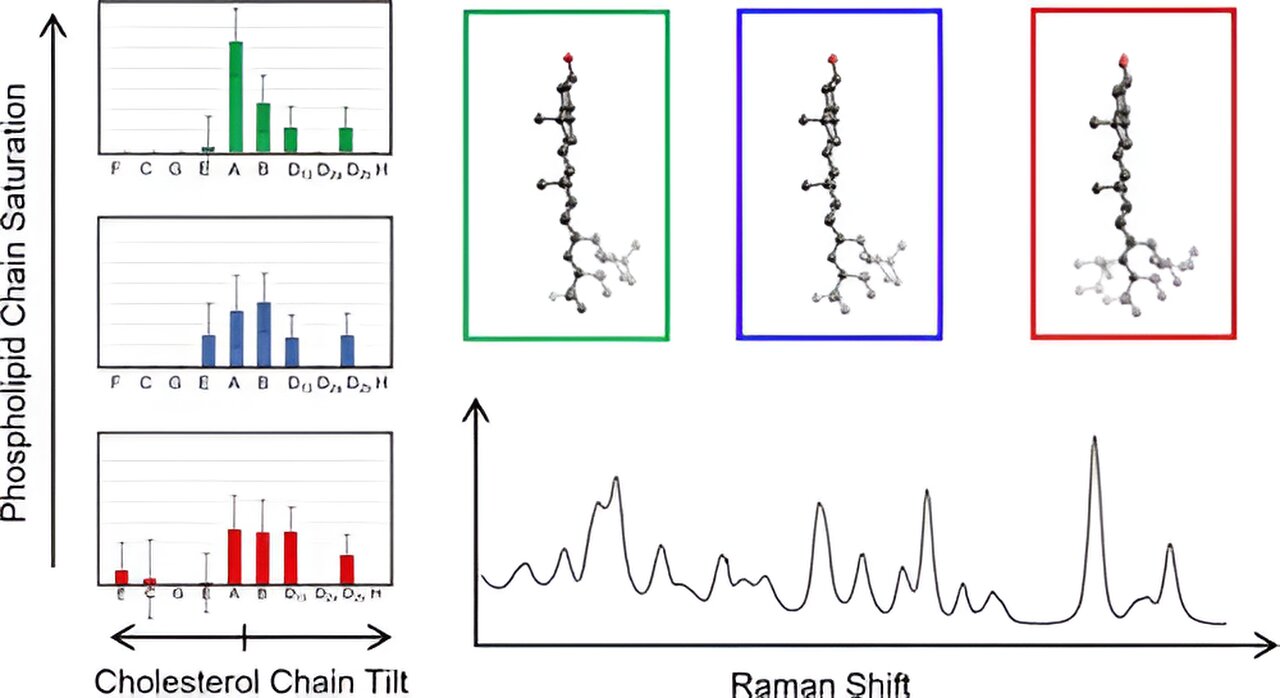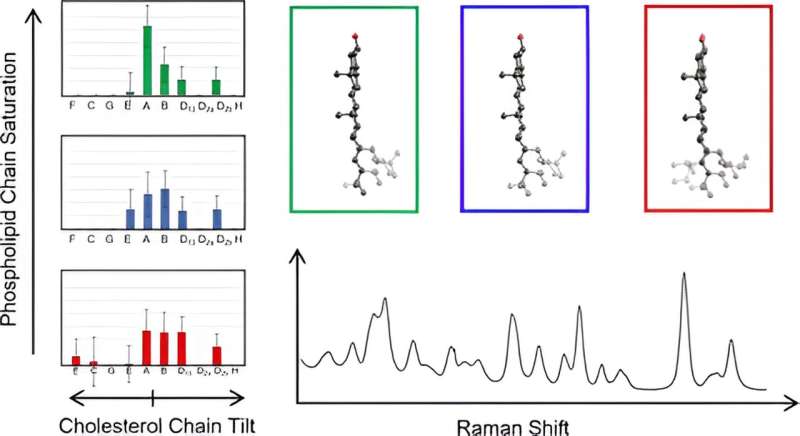

A new study by Rice University researchers led by Jason Hafner could open new pathways for understanding how cholesterol influences cell membranes and their receptors, paving the way for future research on diseases linked to membrane organization. This research was published in the Journal of Physical Chemistry.
Cholesterol is one of the key molecules found in biomembranes, complex structures composed of proteins and lipids. It plays a crucial role in organizing the membrane and influencing the behavior of receptors embedded within it. But understanding the structure and interactions of cholesterol in biomembranes has been a longstanding obstacle for researchers.
“Our breakthrough could have significant implications for understanding diseases related to cell membrane function, particularly cancer, where membrane organization is critical,” said Hafner, a professor of physics and astronomy and chemistry.
To tackle this challenge, Hafner’s lab turned to Raman spectroscopy, a technique that uses laser light to scatter molecules and produce detailed vibrational spectra, offering rich molecular information.
The researchers examined cholesterol molecules embedded in membranes and compared their observed spectra with those calculated using density functional theory, a method typically used in quantum mechanical calculations.
“This process allowed us to observe the unique vibrations of each molecule and learn more about their structure,” Hafner said.
The research team computed Raman spectra for 60 different cholesterol structures, focusing on cholesterol’s unique fused ring structure and its eight-carbon chain. Through this process, the researchers discovered that these structures could be grouped based on how the chain deviated from the plane of the rings, a finding that sheds light on previously unknown structural variations.
This study marks the first time researchers have directly measured cholesterol chain structures in their natural membrane environment, Hafner said.
“We were surprised to find that all of the cholesterol molecules within the same group had identical spectra at low frequencies,” Hafner said. “This allowed us to simplify the analysis and fit our experimental data to map out membrane cholesterol chain structures.”
Other authors of the study include Rice physics graduate student Kyra Birkenfeld, Rice bioengineering undergraduate student Tia Gandhi and Mathieu Simeral, a former Rice graduate student and current postdoctoral associate at Weill Cornell Medicine.
More information:
Kyra R. Birkenfeld et al, Cholesterol Conformational Structures in Phospholipid Membranes, The Journal of Physical Chemistry A (2024). DOI: 10.1021/acs.jpca.4c02860
Provided by
Rice University
Citation:
Researchers uncover key insights into cholesterol’s structure in cell membranes (2024, September 23)
retrieved 23 September 2024
from https://phys.org/news/2024-09-uncover-key-insights-cholesterol-cell.html
This document is subject to copyright. Apart from any fair dealing for the purpose of private study or research, no
part may be reproduced without the written permission. The content is provided for information purposes only.